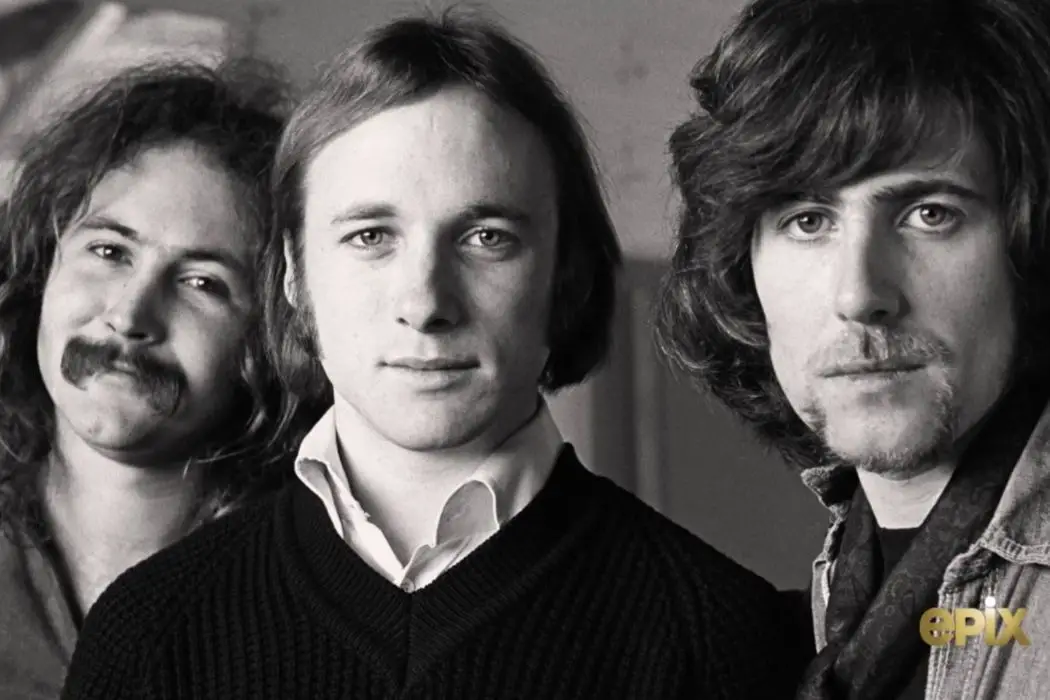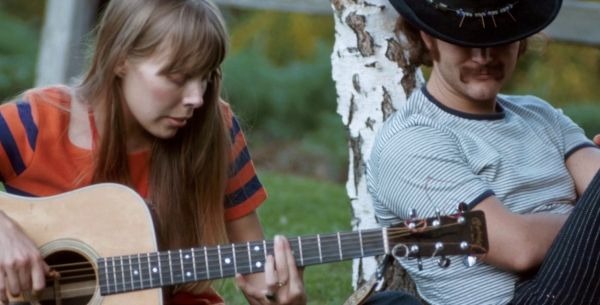LAUREL CANYON: An Intimate Portrait Of L.A.’s Legendary Musical Oasis

Tynan loves nagging all his friends to watch classic movies…
If you’ve followed the ’60s music scene at all, Henry Diltz is one of those ubiquitous names you’ll hear kicked around at some point or another. If there’s anything close to a historian of Laurel Canyon, he might very well be it. He started out at the famed Troubador nightclub – part of The Modern Folk Quartet – and grew to know the surrounding community intimately.
Its geography was made up of a whole host of arteries and capillaries radiating out from L.A. As a resident, he came to appreciate the sounds of the canyon: coyotes off in the distance, the intermittent hoots of an owl at night, and of course, acoustic guitars.
In such an environment, he photographed some of the most iconic members of the music scene in their natural habitat, as it were. No one could have known that many of these folks would bloom into some of the most luminary talents of a generation. Diltz wasn’t there looking for history. It was simply life as it happened.
For whatever reason, there seems to be a renewed interest in the creative, collaborative ecosystem that was Laurel Canyon. Not only did Jakob Dylan headline Echo in the Canyon, in what felt like a pilgrimage to a musical mecca, we have also seen documentaries on the likes of David Crosby and Linda Ronstadt, among others.
In full disclosure, Laurel Canyon: A Place in Time isn’t altogether unparalleled in subject matter or the way it winds up talking about it. For those who know anything about folk going rock and roll, you need only look to The Byrds, started inauspiciously by Roger McGuinn, David Crosby, and Gene Clark. Soon thereafter you had Richie Furay joining forces with Stephen Stills and Neil Young to headline Buffalo Springfield. The narratives surrounding these partnerships are not altogether new.
A Place in Time
What feels particularly special is having this vast assortment of first-hand witnesses who were on the ground floor as these things were happening. Instead of having an erudite batch of talking heads explain the social significance, it feels far more intimate, laced with anecdotes and more off-the-cuff imagery. Far from mere social significance, these years were formative for many on a personal level.
As teased from the outset, it’s less about the present and more about actually capturing the moment in time. Creatively, Alison Ellwood accentuates this decision by assembling the images and home movies into this equally personal framework.
If Diltz serves as one makeshift documentarian, the other is Nurit Wilde who graduated from groupie to a light technician at the Whisky a Go Go, moonlighting as a photographer on the side. With The Doors as the local house band and Buffalo Springfield one of her many subjects, she boasts yet another extraordinary catalogue.
Just in considering a few of the names, this docuseries is an instant reminder of how diverse the music was burgeoning up out of this creative nucleus. If I survey myself, I tend to think purely of folk-rock, which certainly had its roots here, but then you have the likes of Frank Zappa and Alice Cooper or even the Monkees, all playing a part in this petri dish of collective cultivation.

What becomes evident is how – at least in those early years – in the mid-60s, the community could still maintain a kind of bubble, and the songs were mostly apolitical (One of the exceptions was the emblematic protest anthems “For What It’s Worth).
It’s David Crosby who makes a grandiose comparison, with the Laurel Canyon community being like the Reinnasance or Paris in the 1930s. Taking stock of everyone who was gathered together, he might honestly have a point. History provides some vindication.
Mama Cass of the Mamas and the Papas famously held garden parties and hangouts where everyone gathered. I can’t think of a more eclectic group than Crosby, Mickey Dolenz (of The Monkees), and Eric Clapton in the middle of Cream, all being serenaded by the acoustic artistry of Joni Mitchell.
Forever the social creature, it was also Mama Cass who brought together arguably the greatest supergroup of all-time: Crosby, Stills, Nash (& Young). Around the same time, Nash and Mitchell set off on a rapturous love affair colored so exquisitely by the CSNY tune “Our House.”
The Bubble Bursts
If there is a symbolic capstone for this period, it would be Woodstock because not only did it bring these same performers together in one place, it was the most iconic embodiment of their ideals – peaceful community and artistic expression. No one captures it better than Mitchell in her titular song.
After these interludes, Laurel Canyon sets out on the most obvious narrative arc and understandably. The ominous rumblings of the Manson Family usher in a new era, all but quelling the hopefulness. The hellacious murder of Sharon Tate and her house guests left a lasting scar on society and as a result, hippies were an even greater social pariah.
For the sake of those living in this community, the sting was more than a stigma. Cielo Drive was right at the heart of their world. Byrd’s producer Terry Melcher had once rented the home and purportedly considered recording Charles Manson’s music. Mark Volman of the Turtles went to high school with some of the Manson Family members, and Johnny Echols of Love had once been good friends with 21-year old Bobby Beausoleil who was later implicated. It hit them right in their comfort zones.
There is this doleful sense that Laurel Canyon could never totally go back to the same sense of optimistic even naive communalism. It’s Diltz who recollects about how before the killing he always used to pick up hitchhikers without a thought. After, he was suspicious of everyone. It’s just a reality of how the world was forced to mature in a matter of months.
Evolution and Dissolution
If there is an ongoing theme in part two, it has to do with this constant sense of evolution and dissolution. You have events like Woodstock or even the Moon Landing positioned as landmark moments bringing people together. Whereas Vietnam and the Manson murder, and later the Altamont concert, only highlighted the fissures slicing through our society. They subsequently elicited some of our most prominent pieces of reactionary art. One prime example is “Ohio” made as an indictment of the Kent State shootings.
In tandem, Graham Nash and Joni Mitchell became a couple only for it to end abruptly. The Mamas & Papas eventually parted ways, and the Byrds grew and changed, adding Gram Parsons and charting a new musical course. The adverse effects of cocaine and magnified fame led to the embittered breakup of CSN. Jim Morrison spiraled into alcoholism before his untimely death in France. There’s a sense that the vortex of the business was taking over and sucking all the warmth out of these bright-eyed kids. And yet it was not completely hopeless.

Soon they were joined by a second wave of troubadours. It’s in this influx during the ’70s Laurel Canyon was introduced to the likes of Jackson Browne, Linda Rondstadt, Bonnie Raitt, and the infancy of the Eagles. If the Byrds were the harbingers of a revolutionary melding of sounds, The Eagles were their descendants, bursting onto the stage and becoming one of the most popular acts the world has ever known.
Conclusion: Laurel Canyon
Make no mistake, while it doesn’t boast any earth-shattering revelations that aficionados of the era are not already familiar with, there is still so much that’s worthwhile about Laurel Canyon.
The greatest asset is this inbred sense of intimacy. It never feels like it resorts to a kind of distant analysis or didacticism. Instead, we are allowed to remain in the moments — riding away on the images of the past and the music that made these swaths of time transcendent. This is the true gift of the docuseries, and with its robust music licensing, there’s no way for it to get its most crucial piece wrong.
What’s more, because it casts a wider net and can get more expansive with its coverage of the Laurel Canyon music scene, you get the acknowledgment of some well-deserving, if not always fully-aprreciated bands. The first is Love, co-founded by Johnny Echols, who supplies numerous insights, including the influence of Little Richard (timely with the icons recent passing). Other worthwhile shoutouts go to Little Feat, a band that never seemed to gain any traction or J.D. Souther who feels like he could have easily been a member of the Eagles and yet never ended up as one.
For my money, the band I was most pleased to see covered was anchored by a future member of the Eagles (Bernie Leadon). That, folks, is The Flying Burrito Brothers. Their spectacular name notwithstanding, in a relatively brief window of output they showcased an eclectic mix of influences. While they never reached the height of success on par with some of their contemporaries, this diversity and confluence of tastes and talents more than encapsulates Laurel Canyon. To take another line from David Crosby, “When a chemistry happens between people musically, it’s magic.”
What do you think led to this proliferation of new and recent content revolving around the music of Laurel Canyon? Please let us know in the comments below.
Laurel Canyon will premiere on EPIX in Two parts on May 31st and June 7th.
Watch Laurel Canyon
Does content like this matter to you?
Become a Member and support film journalism. Unlock access to all of Film Inquiry`s great articles. Join a community of like-minded readers who are passionate about cinema - get access to our private members Network, give back to independent filmmakers, and more.
Tynan loves nagging all his friends to watch classic movies with him. Follow his frequent musings at Film Inquiry and on his blog 4 Star Films. Soli Deo Gloria.













